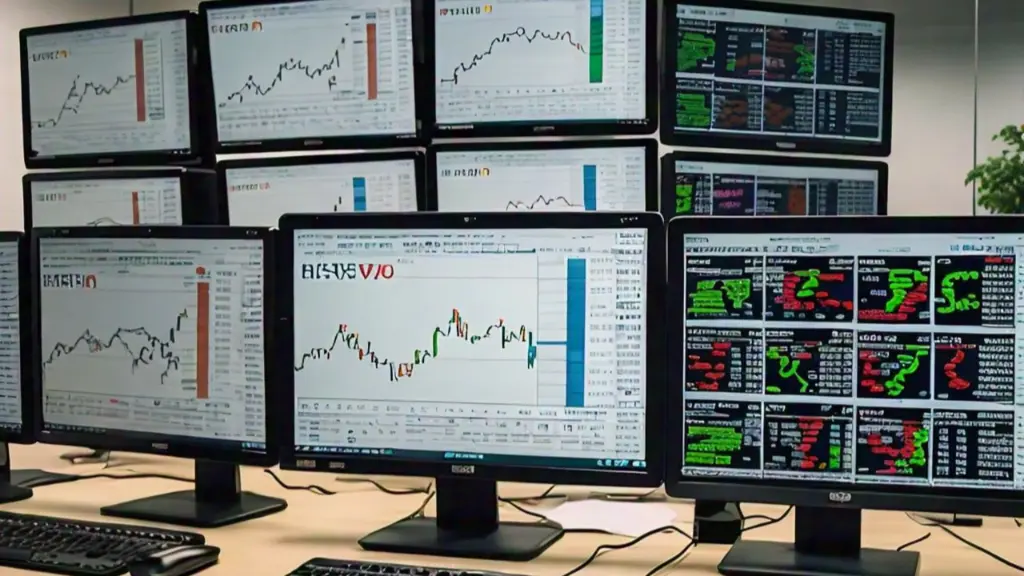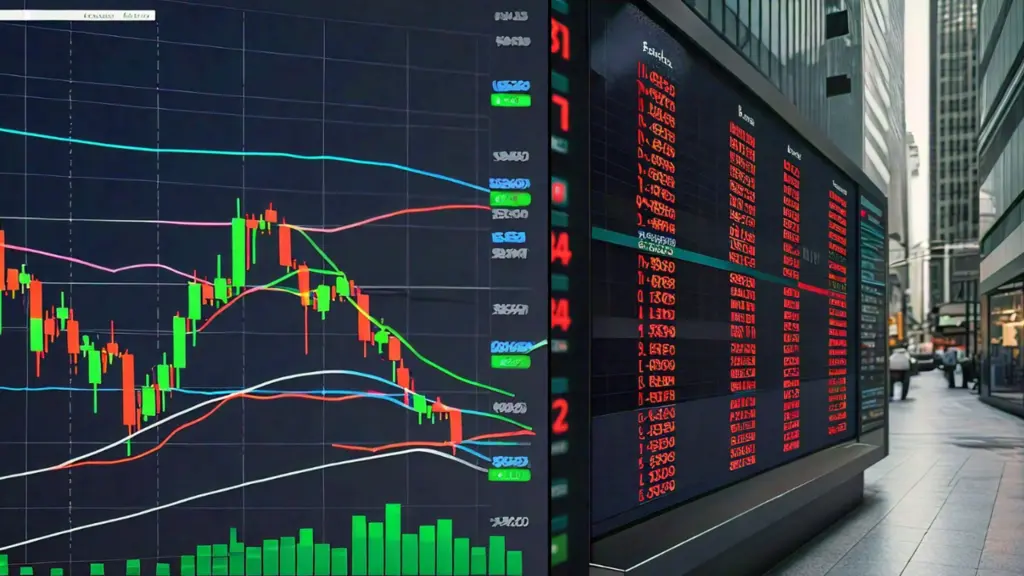Fintechzoom.com Nikkei 225 Today: A Guide to Market Trends
The Nikkei 225 is Japan’s most well-known stock market index as it measures the performance of 225 top-tier companies listed on the Tokyo Stock Exchange. To get the latest updates on the Nikkei 225, you can use Fintechzoom to learn how the market is performing.
This can assist investors and businesses stay up with changes in the Japanese economy. Fintechzoom.com is a dependable source for information regarding Nikkei 225 and we are here to tell you more about it.
Fintechzoom.com Nikkei 225 Today Price
Let’s have a quick look at the live chart for Nikkei 225 Today Price:

Introduction to the Nikkei 225
The Nikkei 225 is Japan’s most prominent stock market index which shows the performance of 225 top-tier companies listed on the Tokyo Stock Exchange. The index debuted in 1950 and it covers a lot of industries including technology and banking. This index has well-known firms such as Toyota and SoftBank which makes it an important indicator of the Japanese economy.
The Nikkei 225 functions similarly to the Dow Jones Industrial Average in the United States. It is price-weighted which means that companies with higher stock prices have a greater influence over the index’s movement. Investors and experts carefully monitor the Nikkei 225 to understand the market mood and Japan’s economic outlook.
Now Japan is a prominent player in global trade and technology so the Nikkei 225’s performance can show bigger global market trends. Monitoring this index keeps investors informed about the general health of the Japanese economy and the global market.
The Role of Fintech in the Asian Markets
Fintech is transforming the Asian market landscape by giving innovative technologies that improve financial service efficiency and accessibility. One of its most important contributions is in digital payments with platforms such as WeChat Pay and Alipay in China.
Another example is Paytm in India which has transitioned to cashless economies. This transition has enabled millions of consumers to make transactions more convenient and secure.
Furthermore, investing systems such as robo-advisors have equalized access to the stock market which allows regular investors to participate in a lot of assets. Investors can invest in stocks and bonds without the need for traditional financial advisors. This has created new opportunities for investors, especially in markets such as Singapore and Hong Kong.

6 Key Features of the Nikkei 225
Now let’s get you to understand the key features of Nikkei 225:
Price-Weighted Index
The Nikkei 225 index is price-weighted which means that businesses with higher stock prices have a greater impact on the index’s movements. This is different from market-cap-weighted indices such as the S&P 500 which prioritize a company’s size. Fast Retailing businesses can have a greater impact on the Nikkei 225 than a larger company with a lower stock price.
Composition of 225 Leading Companies
The Nikkei 225 comprises 225 prominent firms listed on the Tokyo Stock Exchange. These firms come from many different industries, such as automotive and finance, giving the index a representative sample of Japan’s economy.
Reflects Japan’s Economic Health
The Nikkei 225 is regarded as an indicator of Japan’s economic strength. When the index performs well, it signals development and stability in Japan’s corporate environment. When it falls, it shows bigger economic issues or global effects. Given Japan’s prominence in commerce and technology, investors use the Nikkei 225 to track economic changes.
Historical Significance
The Nikkei 225, launched in 1950, is one of the world’s oldest and most established stock indices. Its long history makes it an important point of reference for following Japan’s post-World War II economic recovery and more recent issues such as the 2008 financial crisis. Over time, the index has shown Japan’s economy and major worldwide economic developments.
Global Influence
As the world’s third-largest economy, Japan’s stock market, led by the Nikkei 225, holds considerable power in global markets. The Nikkei is closely watched by international investors and experts because changes in the index can affect market sentiment across Asia and beyond. For example, if Japan’s economy grows rapidly or experiences instability, it can impact trading patterns in European markets.
Sector Representation
The Nikkei 225 index has many sectors, including industrials, technology, finance, and healthcare. Technology companies like Sony and automakers like Toyota play a prominent role in the index’s fluctuations. This sector variety exposes investors to many aspects of Japan’s economy.
Top Companies in the Nikkei 225
Here are some of the top companies of the Nikkei 255 indices:
- Toyota Motor Corporation: Toyota is one of the world’s largest car manufacturers and a major component in the Nikkei 225.
- Sony Group Corporation: As a global leader in electronics and gaming, Sony greatly contributes to the Nikkei 225.
- SoftBank Group Corporation: SoftBank is a prominent international corporation that operates in telecommunications and investing.
- Fast Retailing Co., Ltd: This company is the parent business of Uniqlo, a popular clothing brand that has grown in Asia, Europe, and North America.
- Keyence Corporation: Keyence is a top manufacturer of automation sensors and other industrial equipment.
- Mitsubishi UFJ Financial Group: Mitsubishi UFJ Financial Group is one of Japan’s leading financial organizations, playing an important role in both the domestic and global financial markets.
- Tokyo Electron Limited: Tokyo Electron is a renowned semiconductor firm that supplies equipment for computer chip fabrication.
4 Important Factors Affecting the Nikkei 225 Today

Knowing which factors affect stock indices is important before investing. Here are some key factors that affect Fintechzoom.com Nikkei 225 today:
Global Economic Conditions
Global economic factors such as inflation and interest rate changes considerably impact the Nikkei 225. Growing global inflation rates, particularly in the United States and Europe, are placing pressure on Japan’s stock market today. Investors are impatiently monitoring central bank policies for future interest rate changes that could affect corporate borrowing costs and general market mood.
Corporate Earnings Reports
The success of its listed companies also influences the Nikkei 225’s fluctuations. Positive earnings reports from major industries such as technology and manufacturing can increase investor confidence and lift the index. Excellent earnings from businesses like Toyota and Sony have driven the Nikkei higher and showed a healthy corporate environment.
Monetary Policy in Japan
The performance of the Nikkei 225 is heavily influenced by the Bank of Japan’s monetary policy. Today’s market movements result from discussions about anticipated interest rate hikes to suppress inflation. If the BoJ decides to tighten its policies, it can cause a shift in investment flows, influencing both domestic and foreign investors.
Exchange Rates and Yen Fluctuations
The Japanese yen’s strength or weakness against other currencies impacts the Nikkei 225. A weakened yen supports export-heavy corporations such as Toyota and Sony by making their products cheaper abroad. In comparison, a rising yen can damage these companies and lower market mood by putting downward pressure on the index.
Investment Strategies Based on Nikkei 225 Data

Before putting your money in stocks, having a plan is important. Here are some strategies we listed for you:
Sector-Based Investing
Investors can use Nikkei 225 data to target certain sectors in their portfolios. The index covers companies from a lot of industries like automotive and finance so investors can focus on high-performing sectors. For example, if technology stocks drive the Nikkei’s growth, investors can decide to invest more money in companies like Sony or Keyence.
Timing and Economic Cycles
Japan’s economy experiences cycles of growth and recession. Investors can use Nikkei 225 trends to know where Japan is in its economic cycle and then adapt their trading strategy accordingly. Investing in the index during an economic upswing can result in many gains as business earnings climb.
Currency Hedging
Many of the Nikkei 225 firms rely on exports, so changes in the Japanese yen can impact their performance. Investors can protect their positions by hedging currency, especially if they anticipate the yen weakening.
A weaker yen benefits exporters such as Toyota and Sony and leads to an increase in the Nikkei. Currency hedging decreases the risk caused by exchange rate volatility, making it a good approach for foreign investors.
Long-Term Versus Short-Term Investing
Long-term investors can look at broad economic indicators and stick to Nikkei 225 equities for steady growth over time. The index’s history shows that long-term investments in Japan’s top corporations can produce good returns despite being volatile. Short-term investors on the other hand can benefit from day-to-day changes in response to company earnings releases.
Diversification Using ETFs
Exchange-traded funds (ETFs) give a mixed alternative for investors seeking exposure to the Nikkei 225 without buying individual stocks. ETFs that track the Nikkei 225 expose investors to the Japanese market while limiting risk. This technique is excellent for people who wish to balance their portfolio with international stocks because it gives a safer approach.
Conclusion
Fintechzoom.com Nikkei 225 today has been volatile but has also shown performance. Major companies such as Sony have positively impacted the index, although growing inflation and global economic issues continue to influence market fluctuations.
Investors are carefully monitoring the Bank of Japan’s next moves as interest rate changes could influence future developments. To get important data and insights about the Nikkei 225, you can use platforms like Fintechzoom for your assistance.
FAQs
The Nikkei is an abbreviation for Japan’s Nikkei 225 Stock Average, the country’s most important and well-known stock index.
The Price Adjustment Factor (PAF) adjusts the constituent prices which are then totaled and divided by the divisor. The third digit under the decimal is rounded which results in a two-digit index.
You cannot directly invest in the Nikkei 225 from the United States. You can get exposure to this index by purchasing shares of an ETF that tracks the Nikkei.
